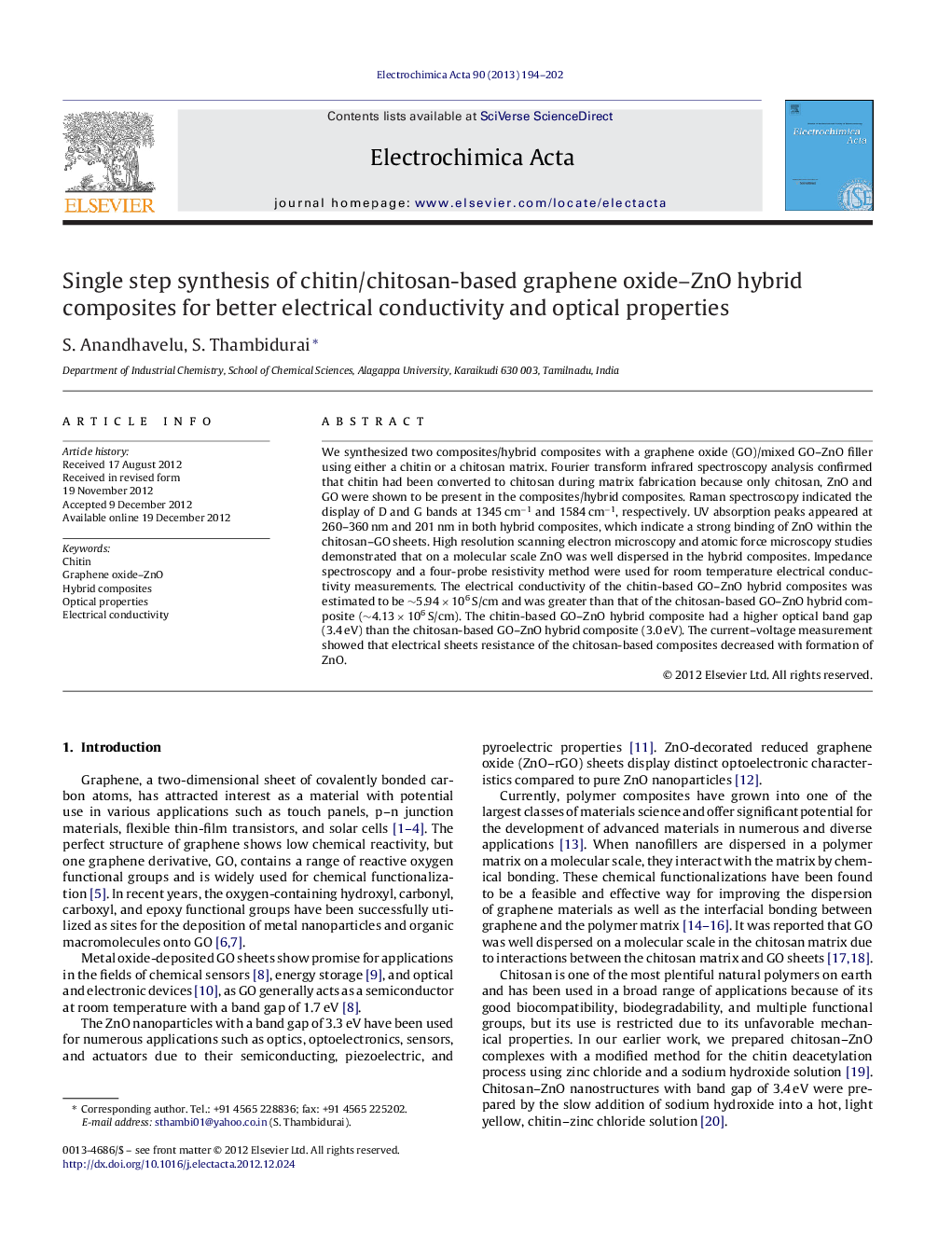| Article ID | Journal | Published Year | Pages | File Type |
|---|---|---|---|---|
| 187440 | Electrochimica Acta | 2013 | 9 Pages |
We synthesized two composites/hybrid composites with a graphene oxide (GO)/mixed GO–ZnO filler using either a chitin or a chitosan matrix. Fourier transform infrared spectroscopy analysis confirmed that chitin had been converted to chitosan during matrix fabrication because only chitosan, ZnO and GO were shown to be present in the composites/hybrid composites. Raman spectroscopy indicated the display of D and G bands at 1345 cm−1 and 1584 cm−1, respectively. UV absorption peaks appeared at 260–360 nm and 201 nm in both hybrid composites, which indicate a strong binding of ZnO within the chitosan–GO sheets. High resolution scanning electron microscopy and atomic force microscopy studies demonstrated that on a molecular scale ZnO was well dispersed in the hybrid composites. Impedance spectroscopy and a four-probe resistivity method were used for room temperature electrical conductivity measurements. The electrical conductivity of the chitin-based GO–ZnO hybrid composites was estimated to be ∼5.94 × 106 S/cm and was greater than that of the chitosan-based GO–ZnO hybrid composite (∼4.13 × 106 S/cm). The chitin-based GO–ZnO hybrid composite had a higher optical band gap (3.4 eV) than the chitosan-based GO–ZnO hybrid composite (3.0 eV). The current–voltage measurement showed that electrical sheets resistance of the chitosan-based composites decreased with formation of ZnO.
► UV absorption at 260–360 nm confirmed strong binding of ZnO with chitosan–GO sheets. ► Chitin-based GO–ZnO shows higher electrical conductivity than chitosan-based GO–ZnO. ► Chitin-based GO–ZnO will useful in sensing, catalysis and energy storage applications.
